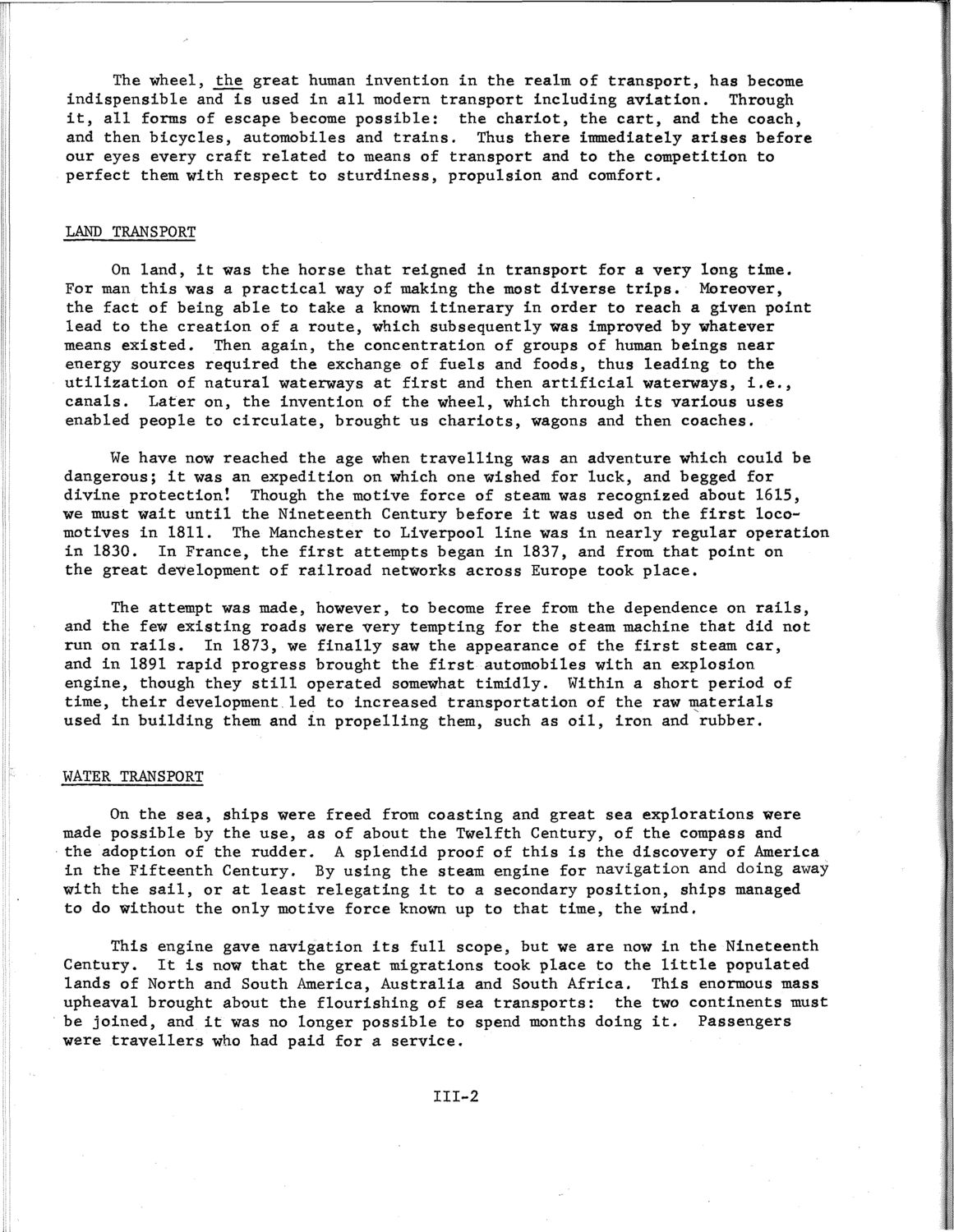| |
| |
Caption: SWE - Proceedings of the First International Conference of Women Engineers and Scientists
This is a reduced-resolution page image for fast online browsing.

EXTRACTED TEXT FROM PAGE:
The wheel, the great human invention in the realm of transport, has become indispensible and is used in all modern transport including aviation. Through it, all forms of escape become possible: the chariot, the cart, and the coach, and then bicycles, automobiles and trains. Thus there immediately arises before our eyes every craft related to means of transport and to the competition to perfect them with respect to sturdiness, propulsion and comfort. LAND TRANSPORT On land, it was the horse that reigned in transport for a very long time. For man this was a practical way of making the most diverse trips. Moreover, the fact of being able to take a known itinerary in order to reach a given point lead to the creation of a route, which subsequently was improved by whatever means existed. Then again, the concentration of groups of human beings near energy sources required the exchange of fuels and foods, thus leading to the utilization of natural waterways at first and then artificial waterways, i.e., canals. Later on, the invention of the wheel, which through its various uses enabled people to circulate, brought us chariots, wagons and then coaches. We have now reached the age when travelling was an adventure which could be dangerous; it was an expedition on which one wished for luck, and begged for divine protection! Though the motive force of steam was recognized about 1615, we must wait until the Nineteenth Century before it was used on the first locomotives in 1811. The Manchester to Liverpool line was in nearly regular operation in 1830. In France, the first attempts began in 1837, and from that point on the great development of railroad networks across Europe took place. The attempt was made, however, to become free from the dependence on rails, and the few existing roads were very tempting for the steam machine that did not run on rails. In 1873, we finally saw the appearance of the first steam car, and in 1891 rapid progress brought the first automobiles with an explosion engine, though they still operated somewhat timidly. Within a short period of time, their development led to increased transportation of the raw materials used in building them and in propelling them, such as oil, iron and rubber. WATER TRANSPORT On the sea, ships were freed from coasting and great sea explorations were made possible by the use, as of about the Twelfth Century, of the compass and the adoption of the rudder. A splendid proof of this is the discovery of America in the Fifteenth Century. By using the steam engine for navigation and doing away with the sail, or at least relegating it to a secondary position, ships managed to do without the only motive force known up to that time, the wind. This engine gave navigation its full scope, but we are now in the Nineteenth Century. It is now that the great migrations took place to the little populated lands of North and South America, Australia and South Africa. This enormous mass upheaval brought about the flourishing of sea transports: the two continents must be joined, and it was no longer possible to spend months doing it. Passengers were travellers who had paid for a service. III-2
| |